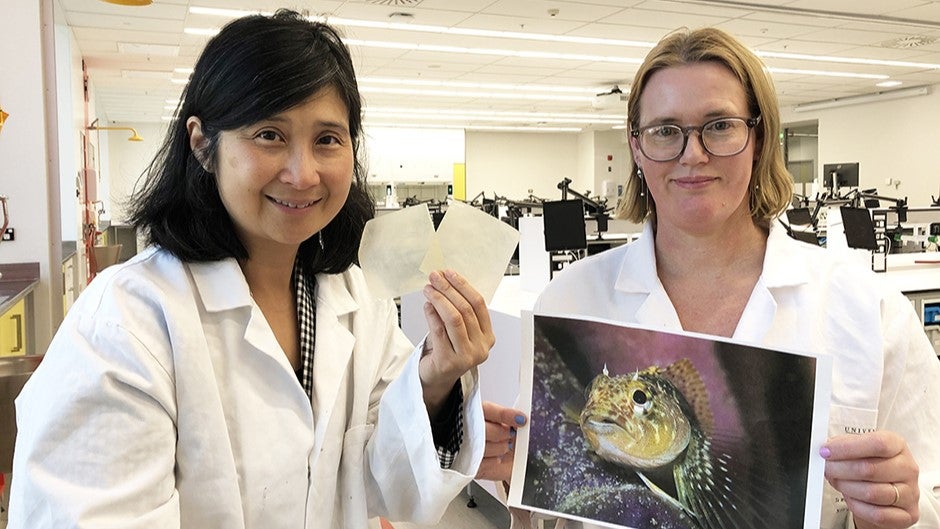
A new study has revealed that biodegradable plastics (known as bioplastics) “may not be the silver bullet to plastic pollution” that the packaging industry had hoped for, as fish behaviour appears to be negatively impacted.
The study, published in Science of the Total Environment and funded by a University of Otago Research Grant, assesses the impact of both petroleum-derived polymer and biopolymer microplastics on wild fish, specifically the mottled triplefin.
Previous studies have demonstrated the dangers of microplastics, which absorb and leach chemical contaminants, such as polyaromatic hydrocarbons and heavy metals. Marine organisms are at risk of ingesting these microplastics – both petroleum-derived polymers and biopolymers – or absorbing them through trophic transfer or respiration. Previous studies have suggested that the uptake of petroleum-derived polymer microplastics correlates with a change in swimming behaviours.
Bioplastics, made from renewable materials such as starch, cellulose, protein and lipids, were hoped to be a solution. However, lead author Ashleigh Hawke explained that the study suggested: “Biodegradable plastics may not be the silver bullet to plastic pollution as we believe them to be.
“Although they are not as bad, they can still cause negative effects to those animals that may be exposed to them – in the case of this study, populations would decline as their escape behaviours are impaired.”
The study compared the impacts of petroleum-derived polymer and biopolymer microplastics on marine life. It found that both changed fish behaviour. However, petroleum-derived polymers impacted wild fish’s maximum speed, latency and responsiveness, whilst bioplastics impacted only the maximum escape speed.
Biopolymer microplastics did not impact the directionality and mean speed of the escape performance, or the metabolic rate and recovery time. As such, bioplastics appear to represent an improvement on the impacts of petroleum-derived polymers upon fish, although the impact is not negligible.
Dr Bridie Allan, co-author of the report, wants to see more being done at a policy level to protect marine environments: “The development of traditional plastics has been well established for decades and so there is little variation in the production of them. However, because biodegradable plastics are a relatively new area, there is variation in the way they are manufactured and the materials that are being used.
“This research shows that the raw materials used in these products matters and that the use of them should be more regulated and controlled.
Broadly, the packaging industry has seen an increase in concern about the environment. Filings analyzed by GlobalData demonstrate a steady increase in mentions of key environmental terms since 2019.
The study concludes that: “With petroleum-derived and bioplastic production rising, it is inevitable that marine organisms will be exposed to larger volumes of diverse microplastics, thus increasing the chance of microplastic consumption.
“Furthermore, it is important to note that although bioplastics may be less damaging to the environment than petroleum-derived polymers, they are not without risk. Nonetheless, this highlights the need for better regulation during the production of bioplastics, and that more extensive research is required to understand what the potential impact of release into the environment may be.”
Our signals coverage is powered by GlobalData’s Thematic Engine, which tags millions of data items across six alternative datasets — patents, jobs, deals, company filings, social media mentions and news — to themes, sectors and companies. These signals enhance our predictive capabilities, helping us to identify the most disruptive threats across each of the sectors we cover and the companies best placed to succeed.


